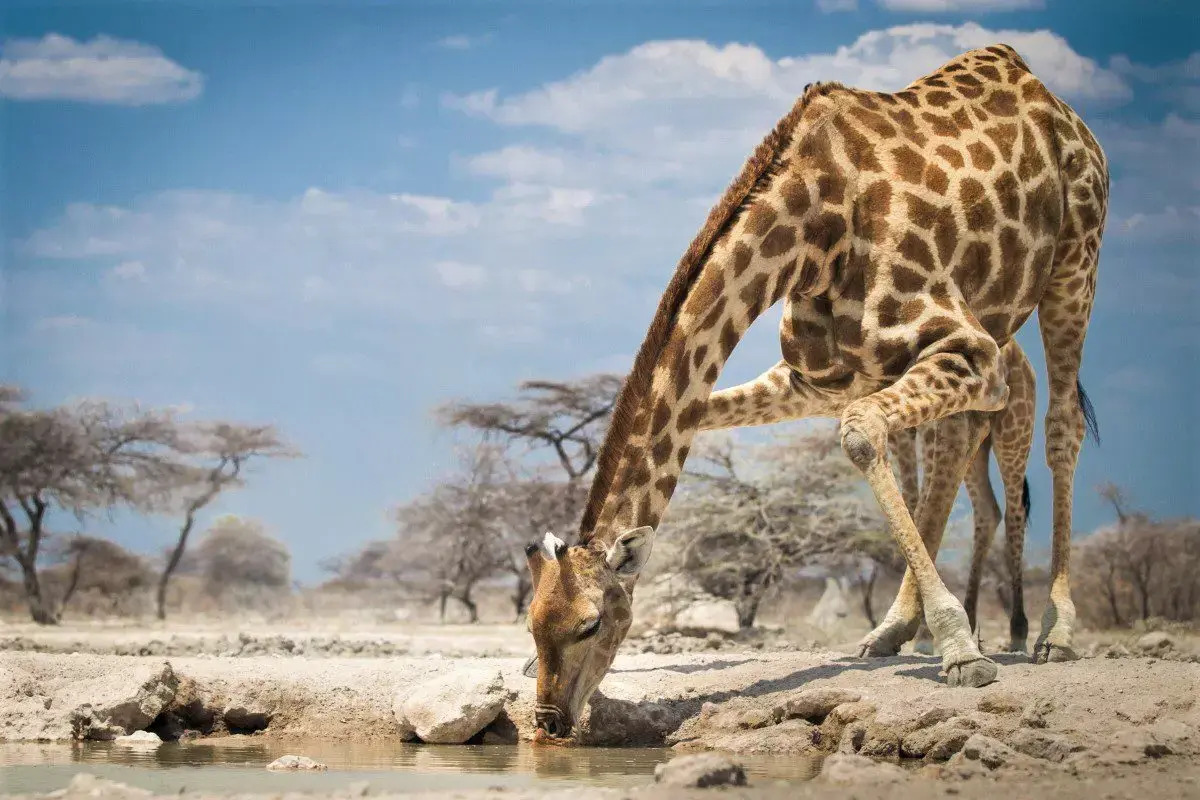
Namibia, a country in southwestern Africa, often flies under the radar but holds a treasure chest of wonders. Did you know Namibia is home to the world's oldest desert, the Namib Desert? This vast land offers more than just sand dunes; it boasts a rich tapestry of culture, wildlife, and history. From the towering dunes of Sossusvlei to the eerie, shipwreck-strewn Skeleton Coast, Namibia's landscapes are both breathtaking and diverse. The country also hosts unique wildlife like the desert-adapted elephants and the rare black rhino. Whether you're an adventurer, a nature lover, or a history buff, Namibia has something to captivate your curiosity. Let's dive into 20 fascinating facts about this incredible nation!
Key Takeaways:
- Namibia's diverse geography includes the ancient Namib Desert, the iconic Sossusvlei, and the lush oasis of Etosha Pan, offering a variety of natural wonders for visitors to explore.
- Namibia's rich cultural heritage, wildlife conservation efforts, and growing economy make it a unique and fascinating country to learn about and visit.
Namibia's Unique Geography
Namibia is a country with a landscape that seems almost otherworldly. From vast deserts to lush wetlands, it offers a variety of natural wonders.
- Namib Desert: The Namib Desert is one of the oldest deserts in the world, dating back at least 55 million years.
- Sossusvlei: This salt and clay pan, surrounded by high red dunes, is one of Namibia's most iconic landscapes.
- Etosha Pan: A massive salt pan that can be seen from space, it transforms into a lush oasis during the rainy season.
- Fish River Canyon: The second largest canyon in the world, it offers breathtaking views and challenging hiking trails.
- Skeleton Coast: Named for the shipwrecks and whale bones that litter its shores, this coast is both eerie and beautiful.
Rich Cultural Heritage
Namibia's culture is as diverse as its geography. The country is home to various ethnic groups, each with its own unique traditions.
- Himba People: Known for their red ochre body paint, the Himba are semi-nomadic herders living in the Kunene region.
- San People: One of the oldest cultures in the world, the San are skilled hunters and gatherers with a deep knowledge of the land.
- Herero Women: Recognizable by their Victorian-style dresses, Herero women wear these garments as a symbol of their heritage.
- Oshiwambo: The largest ethnic group in Namibia, the Oshiwambo people have a rich tradition of music and dance.
- German Influence: Due to its colonial past, Namibia has a significant German influence, evident in its architecture and cuisine.
Wildlife and Conservation
Namibia is a leader in wildlife conservation, with numerous national parks and reserves dedicated to protecting its unique fauna.
- Etosha National Park: Home to hundreds of species, including elephants, lions, and rhinos, it's one of Africa's premier wildlife destinations.
- Cheetah Conservation: Namibia has the largest population of free-roaming cheetahs in the world, thanks to dedicated conservation efforts.
- Desert Elephants: Adapted to the harsh desert environment, these elephants can go days without water.
- Black Rhinos: Namibia is one of the few places where black rhinos can still be found in the wild.
- Cape Cross Seal Reserve: This reserve is home to one of the largest colonies of Cape fur seals in the world.
Economic and Social Facts
Namibia's economy and social structure offer interesting insights into this unique country.
- Mining Industry: Namibia is rich in minerals, particularly diamonds and uranium, which are major contributors to its economy.
- Tourism: With its stunning landscapes and wildlife, tourism is a growing industry, attracting visitors from around the globe.
- Education: Namibia has made significant strides in education, with a literacy rate of over 88%.
- Windhoek: The capital city, Windhoek, is the economic and cultural hub of Namibia, blending modernity with tradition.
- Independence: Namibia gained independence from South Africa in 1990, making it one of the youngest countries in Africa.
Namibia's Unique Wonders
Namibia's got a lot to offer. From the vast Namib Desert to the stunning Skeleton Coast, this country is a treasure chest of natural beauty. Etosha National Park is a must-see for wildlife enthusiasts, while Sossusvlei's red dunes are a photographer's dream. The ancient rock art in Twyfelfontein tells stories from thousands of years ago. Namibia's diverse cultures and rich history add layers to its charm. Whether you're exploring the Fish River Canyon or visiting the quaint town of Swakopmund, there's always something new to discover. The night skies here are some of the clearest you'll ever see, perfect for stargazing. Namibia's unique blend of natural wonders and cultural heritage makes it a destination like no other. So, pack your bags and get ready for an adventure you'll never forget.
Frequently Asked Questions
Was this page helpful?
Our commitment to delivering trustworthy and engaging content is at the heart of what we do. Each fact on our site is contributed by real users like you, bringing a wealth of diverse insights and information. To ensure the highest standards of accuracy and reliability, our dedicated editors meticulously review each submission. This process guarantees that the facts we share are not only fascinating but also credible. Trust in our commitment to quality and authenticity as you explore and learn with us.


